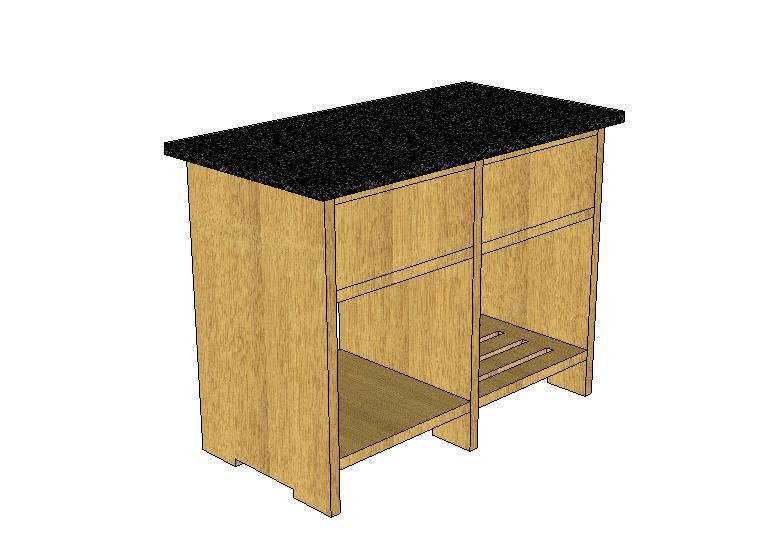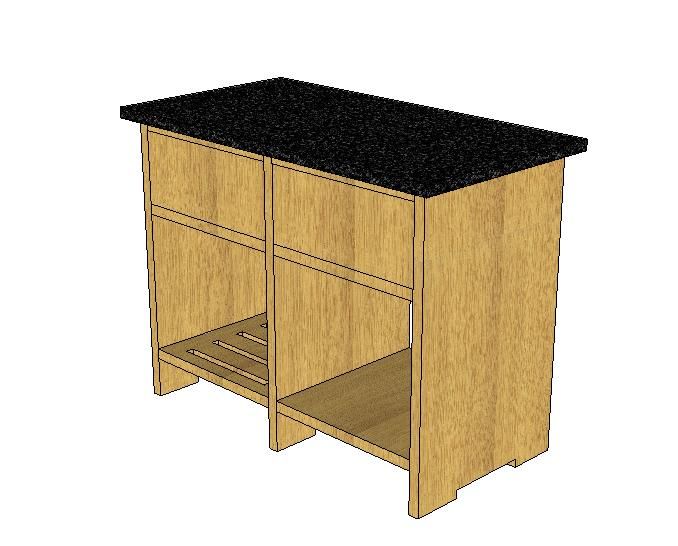MooreToolsPlease
Established Member
- Joined
- 17 Sep 2006
- Messages
- 366
- Reaction score
- 0
Evening all,
got a job coming up for a customer who wants an island unit for her kitchen. i've added a couple of drawings of what she wants.
The only difference is there will be another shelf in the side where the bottom shelf has grooves.
I've got a few reservations here, one being that with a huge slab of granite on top, and no back as such to keep it all square, there might be some movement in the whole piece.
Second is that she wants it all out of solid oak, no mdf anywhere except for drawer construction.
How would the forum go about joining the bottom shelf to the sides allowing for wood movement?


got a job coming up for a customer who wants an island unit for her kitchen. i've added a couple of drawings of what she wants.
The only difference is there will be another shelf in the side where the bottom shelf has grooves.
I've got a few reservations here, one being that with a huge slab of granite on top, and no back as such to keep it all square, there might be some movement in the whole piece.
Second is that she wants it all out of solid oak, no mdf anywhere except for drawer construction.
How would the forum go about joining the bottom shelf to the sides allowing for wood movement?






